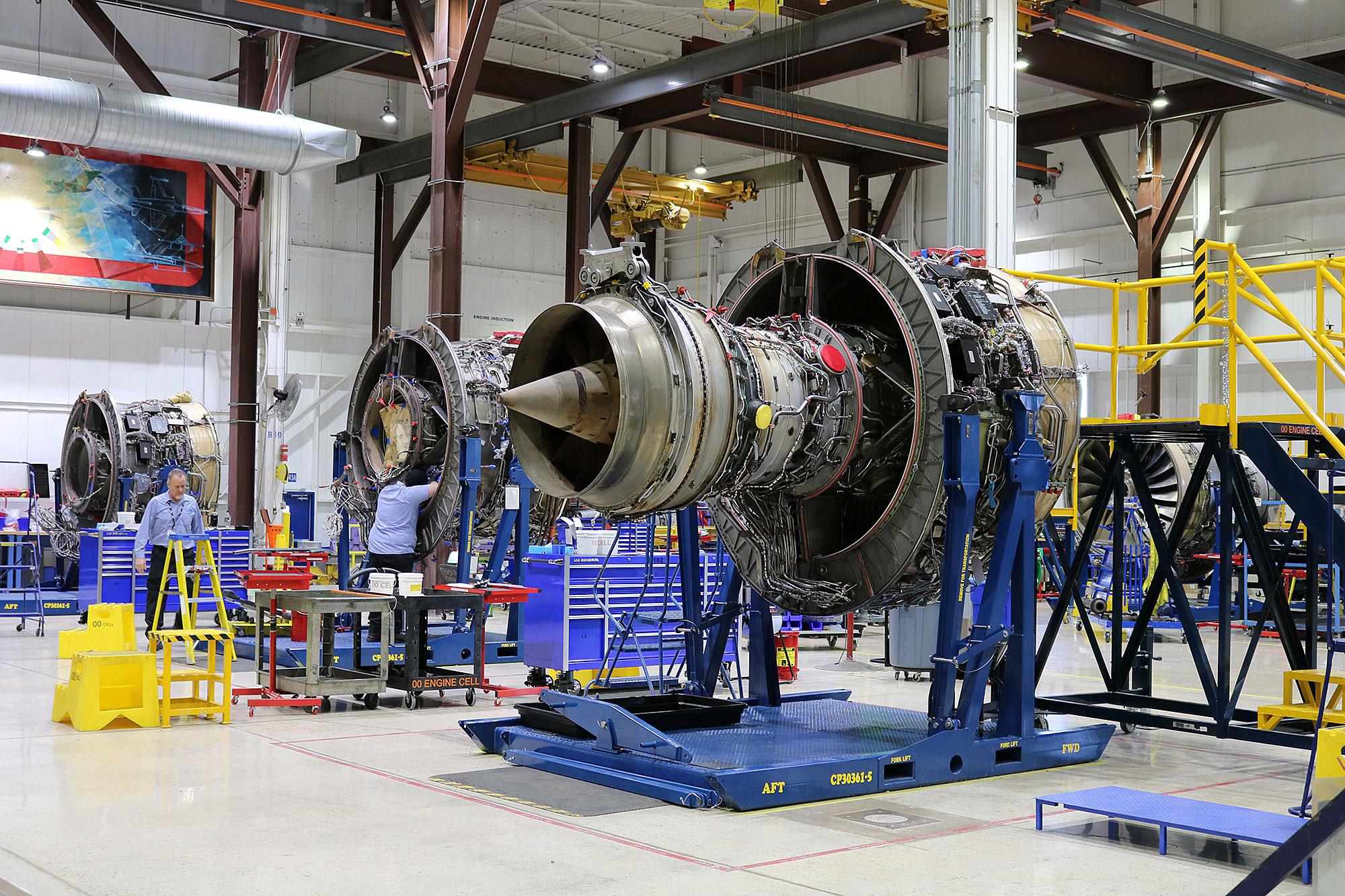
Next to airlines, engine MROs have probably been hit hardest by the virus crisis, as grounded jets have permitted massive deferments of expensive engine overhauls. But a wide portfolio has helped one engine MRO get by without too much pain or any government assistance.
Russell Ford, chairman and CEO of StandardAero, says diversification has given his company some natural hedges against financial damage. “Our portfolio of commercial aviation, business aviation, military, helicopter and component repair has given us some insulation from the more dramatic impacts on global airlines and OEMs.”
A backlog of certain engine programs and normal aftermarket lag times enabled the company’s shops to stay active during the early stages of the pandemic in North America. “During May and June, we had to take some site-specific actions to match capacity with demand, but on the whole, all our facilities are open for business and serving our customers.”
StandardAero’s commercial aviation business has obviously been hardest hit, and Ford expects commercial engine MRO volumes to stay low throughout 2020. But even here there has been some steadiness. “Despite steep declines in certain turbofan engine volumes, our backlog and pipeline for regional jet and turboprop engine MRO is a bit more stable, but we are seeing recent signs of declining demand.”
The company’s component repair volumes were hit by the pandemic in the second quarter. But Ford says some of that decline was offset by demand from customers who previously sent work to other shops that closed for a while, reduced capacity or were slow to return to service.
StandardAero’s helicopter MRO has remained steady for military engines, but there have been significant declines in rotor-wing MRO for civilian engines and airframes. “We manage this situation daily and have contingency plans for quickly aligning operating costs with volume declines on an engine program-by-program and site-by-site basis.”
Ford says his business aviation division has held up well throughout the pandemic. “We have seen a strong pipeline of volumes and experienced unanticipated improvements in scheduled bookings and, in some shops, even higher inputs than planned prior to COVID-19.” The reason? Many business aviation operators have used pandemic downtime to bring assets in for early maintenance.
Another bright spot has been Military MRO. Both U.S. and international armed services have continued with steady requirements. “We are expecting military MRO shops to continue operating in a normal fashion throughout 2020,” Ford says.
Ford is happy about the recent uptick in domestic airline flights and increased schedules for the next few months. But he agrees with industry experts that it will take two to three years for airlines to regain 2019 traffic levels.
Diversification, military and business aviation demand enabled StandardAero to weather the crisis without any assistance under the Coronavirus Aid, Relief, and Economic Security (CARES) Act. However, prior to COVID-19, the company was expanding hiring new mechanics across the globe. And Ford was looking at opportunities in emerging economies in Asia-Pacific and Latin America.
Now, StandardAero is focusing on preserving liquidity and invest only in safety and maintenance projects. The company has reduced employees to meet current demand, but retained the people it needs to match anticipated 2021 requirements and be able to accelerate quickly when demand increases. Ford argues the aerospace MRO of the future must combine efficiency, flexibility, a resilient balance sheet, diversification and agility.





